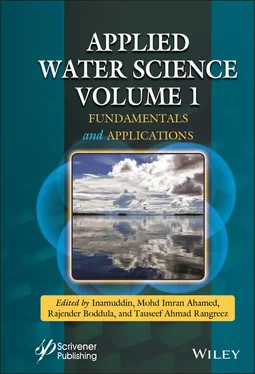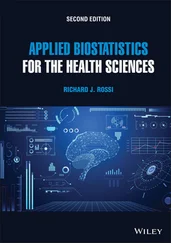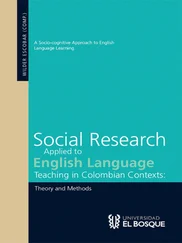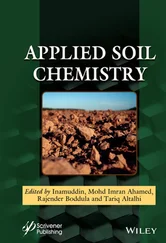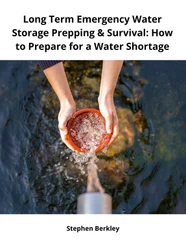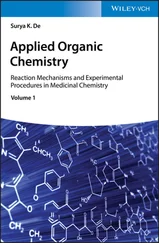2.4.6 Human Toxicology and Epidemiology
Systematic studies investigating human toxicology and epidemiology of pharmaceuticals in aquatic systems are still lacking. Thus, there is need for comprehensive studies based on established research protocols such as case-control experiments to better understand the human toxicology and epidemiology of pharmaceuticals and their metabolites.
2.4.7 Removal Capacity of Low-Cost Water Treatment Processes
Literature investigating the removal of pharmaceuticals in aquatic systems is dominated by water treatment processes used in large-scale centralized systems common in developed countries. The capacity of several low-cost methods (e.g., biosand filtration, solar disinfection, and boiling) commonly used in developing countries to remove pharmaceuticals and their metabolites remains unknown. This calls for further research using field samples such as surface and groundwater contaminated with pharmaceuticals and their metabolites as reported in literature (e.g., Sorensen et al., 2015).
2.5 Summary, Conclusions, and Outlook
The current chapter presented an overview of the occurrence, behaviour, human health risks, and removal of pharmaceuticals in aquatic systems. The major classes of pharmaceuticals detected in aquatic systems were antibiotics, beta-blockers, analgesics, cancer therapeutics, antiinflammatory drugs, lipid regulators, endocrine disruptors, and illicit drugs. Hotspot sources include medical facilities, pharmaceutical industries, veterinary facilities, and municipal wastewater treatment systems which act as reservoirs of pharmaceuticals and their metabolites. Hydrological processes disseminated pharmaceuticals into various aquatic systems, where they undergo sorption, biochemical degradation, phase partitioning, and uptake and bioaccumulation by aquatic organisms. Ingestion of contaminated water and aquatic foods, inhalation, and dermal contact contribute to human exposure. Barring the risk for antimicrobial resistance caused by pharmaceuticals, the evidence linking pharmaceuticals to human health outcomes remain poor. However, human health risks could be significant in Africa and other developing regions due to several risk factors. These exposure risk factors include: (1) the high prevalence of consumption of raw drinking water and aquatic foods from polluted sources, (2) a putative high pharmaceutical pollution associated with intensive use of pharmaceuticals to control the high animal and human disease burden in the tropics, (3) high abuse and misuse of pharmaceuticals caused by the existence of informal markets and weak and poorly enforced environmental, public health, and medicines regulations. The capacity of conventional and advanced water treatment processes to remove pharmaceutics in aqueous systems was discussed. Finally, future research directions were highlighted to address the lack of comprehensive data on the ecotoxicology, epidemiology, and behaviour and fate of pharmaceuticals in aquatic systems especially in the tropics.
WG conceptualized the idea and finalized the manuscript. WG, AK, CD, NM-Z, and NC contributed equally to research design, data acquisition and analysis, and manuscript compilation.
Agunbiade. F. O and Moodley. B (2014). Pharmaceuticals as emerging organic contaminants in Umgeni River water system, Kwazulu-Natal South Africa. Environ Monit Assess 186: 7273–7291.
Aminot. Y, Fuster. L, Pardon. P, Menach. K. L and Budzinski. H (2018). Suspended solids moderate the degradation and sorption of wastewater derived pharmaceuticals in estuarine waters. Science of the total environment 612: 39–48.
Apul, O.G., Rowles III, L.S., Khalid, A., Karanfil, T., Richardson, S.D. and Saleh, N.B., 2020. Transformation potential of cannabinoids during their passage through engineered water treatment systems: A perspective. Environment International, 137, p.105586.
Arnold, K.E., Boxall, A.B.A., Brown, A.R., Cuthbert, R.J., Gaw, S., Hutchinson, TH, Jobling, S., Madden, J.C., Metcalfe, C.D., Naidoo, V., Shore, R.F., Smits, J.E., Taggart, M.A., Thompson, H.M., Assessing the exposure risk and impacts of pharmaceuticals in the environment on individuals and ecosystems. Biol. Lett. 9, 20130492, 2013. doi:10.1098/rsbl.2013.0492
Atanasov, A.G., Waltenberger, B., Pferschy-Wenzig, A-M., Linder, T., Wawrosch, C., Uhrin, P., Temml, V. et al., Discovery and resupply of pharmacologically active plant-derived natural products: A review. Biotechnol. Adv. 33(8), 1582–1614, 2015. doi:10.1016/j.biotechadv.2015.08.001
aus der Beek, T. F.A. Weber, A. Bergmann, S. Hickmann, I. Ebert, A. Hein, A. Küster, Pharmaceuticals in the environment-Global occurrences and perspectives, Environ. Toxicol. Chem. 35 (2016) 823–835. https://doi.org/10.1002/etc.3339.
Badejo, M.A., 2000b. Pesticide pollution in aquatic ecosystems in Nigeria and some African countries. In: Badejo, M.A., Van Straalen, N.M. (Eds.), Pollutants and their Effects on Terrestrial and Aquatic Ecosystems. College Press, Ibadan, pp. 43–51.
Bagnis. S, Fitzsimons. M, Snap. J, Tappin. A and Comber. S (2018). Sorption of active pharmaceutical ingredients in untreated wastewater effluent and effect of dilution in freshwater: Implication of an “impact zone” environment risk assessment approach. Science of the total environment 624: 333–341.
Bartros, M., Peñeulas, J., Pharmaceuticals and personal-care products in plants. Trends Plant Sci. 22(3), 194–203, 2017. doi:10.1016/j.tplants.2016.12.010
Bercu, J.P. N.J. Parke, J.M. Fiori, R.D. Meyerhoff, Human health risk assessments for three neuropharmaceutical compounds in surface waters, Regul. Toxicol. Pharmacol. (2008). https://doi.org/10.1016/j.yrtph.2008.01.014.
Boobis, A., Brown, P., Cronin, M.T.D., Edwards, J., Galli, C.L., Goodman, J., Jacobs, A., Kirkland, D., Luijten, M., et al., Origin of the TTC values for compounds that are genotoxic and/or carcinogenic and an approach for their re-evaluation. Critic. Rev. Toxicol. 47(8), 710-32. doi:10.1080/10408444.2017.1318822
Bottoni, P., Caroli, S., Caracciolo, A.B., Pharmaceuticals as priority water contaminants. Toxicol. Environ. Chem. 92(3), 549-565, 2010. doi:10.1080/02772241003614320
Bound, J.P., Voulvoulis, N., Household disposal of pharmaceuticals as a pathway for aquatic contamination in the United Kingdom. Environ. Health Perspect. 113(12), 1705–1711, 2005.
Boxall, A.B.A., The environmental side effects of medication. EMBO Rpt. 5(12), 1110-1116, 2004. doi:10.1038/sj.embor.7400307
Brodin, T., Piovano, S., Fick, J., Klaminder, J., Heynen, M., Jonsson, M., Ecological effects of pharmaceuticals in aquatic systems - impacts through behavioural alterations. Phil. Trans. R. Soc. B. 369, 20130580, 2014. doi:10.1098/rstb.2013.0580
Brooks, B.W., Foran, C.M., Richards, S.M., Weston, J., Turner, P.K., Stanely, J.K., Solomon, K.R. et al., Aquatic ecotoxicology of fluoxetine. Toxicol. Lett. 42, 169–183, 2003. doi:10.1016/S0378-427(03)00066-3
Brown. S., Kennedy, L., Cullington, M., Mihle, A., Lono-Batura, M., Relating pharmaceuticals and personal care products in bisolids to home exposure. Urban Agric. Reg. Food Syst. 4, 180005, 2019. doi:10.2134/urbanag2018.12.0005
Bruce, G.M. R.C. Pleus, S.A. Snyder, Toxicological relevance of pharmaceuticals in drinking water, Environ. Sci. Technol. (2010). https://doi.org/10.1021/es1004895.
Bu, Q., Shi, X., Yu, G., Huang, J., Wang, B., Assessing the the persistence of pharmaceuticals in the aquatic environment: challenges and needs. Emerg. Contaminants 2, 145–147, 2016. doi:10.1016/j.emcon.2016.05.003
Carter, L.J., Chefetz, B., Adbeen, Z., Boxall, A.B.A., Emerging investigator series: towards a framework for establishing the impact of pharmaceuticals in wastewater irrigation systems on agro-ecosystems and human health. Environ. Sci. Processes Impacts. 21, 605, 2019. doi:10.1039/c9em00020h
Читать дальше
